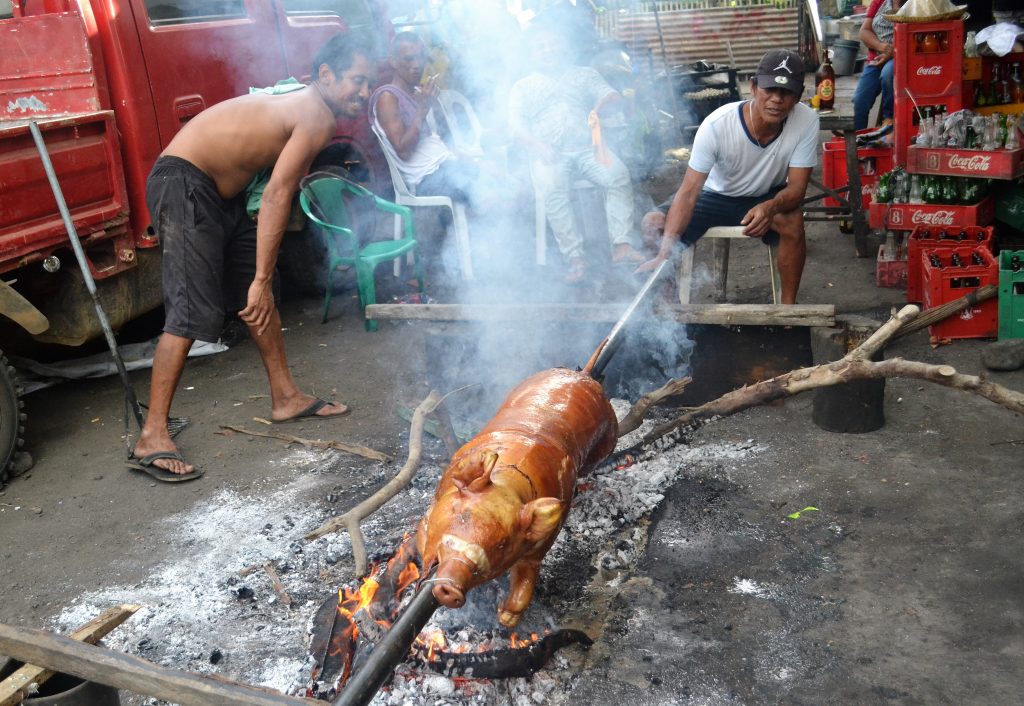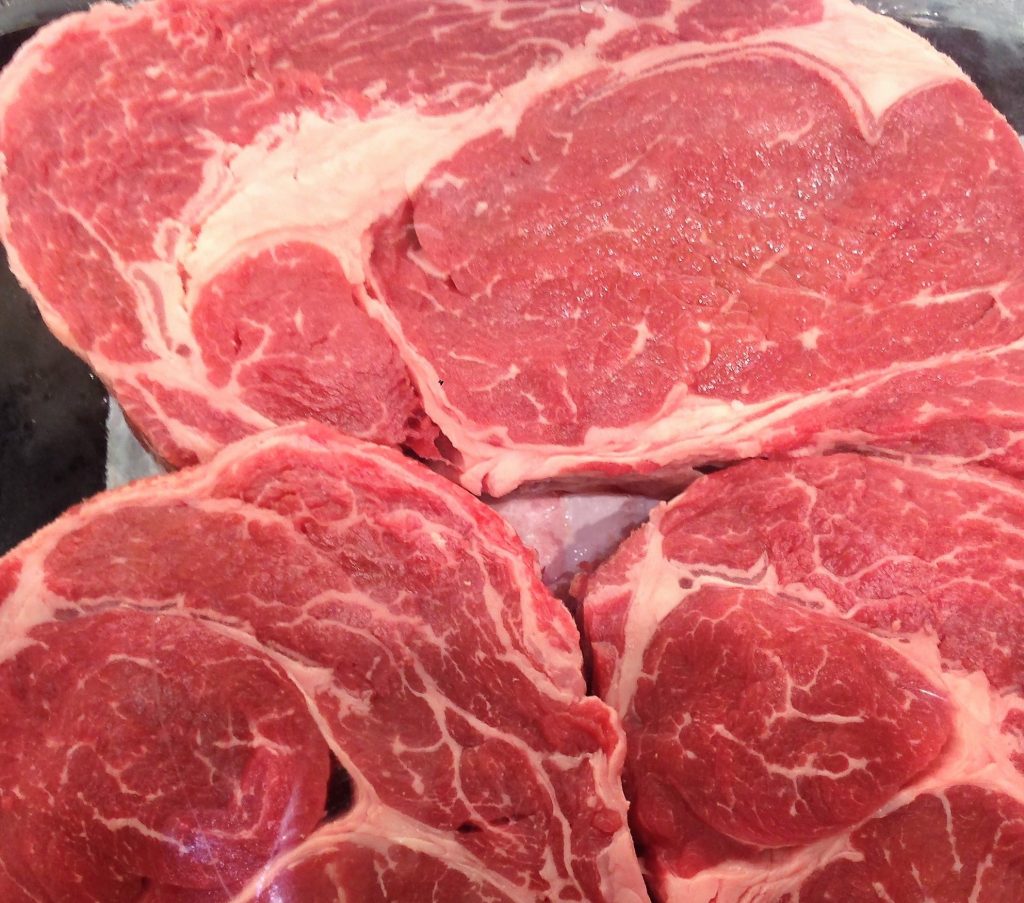“Preventing catastrophic warming is dependent on tackling meat and dairy consumption, but the world is doing very little. A lot is being done on deforestation and transport, but there is a huge gap on the livestock sector. There is a deep reluctance to engage because of the received wisdom that it is not the place of governments or civil society to intrude into people’s lives and tell them what to eat.” – Robert Bailey, lead author of the report on climate change and livestock production
***
Should we cut our meat consumption in order to minimize the release of greenhouse gases into the atmosphere? Some believe we should; skeptics, however, disagree. So, what’s the real score?

Greenhouse gases are those that trap heat in the atmosphere. Examples include carbon dioxide, methane, nitrous oxide, and fluorinated gases (which include ozone-depleting substances like chlorofluorocarbons and halons).
These greenhouse gases make our planet Earth habitable to human beings. “Without greenhouse gases,” Wikipedia contends, “the average temperature of Earth’s surface would be about −18°C rather than the present average of 15°C.”
But too much emissions of greenhouse gases into the atmosphere is bad for our planet. Since the beginning of the Industrial Revolution, human activities have produced a 40% increase in the atmospheric concentration of carbon dioxide from 280 parts per million in 1750 to 406 parts per million in early 2017.
Michael E. Mann, writing for Scientific American, noted: “At current emission rates, temperatures could increase by 2°C, which the United Nations’ Intergovernmental Panel on Climate Change designated as the upper limit to avoid “dangerous levels by 2036.”
So, how come meat consumption comes into the picture? In a country where super typhoons have become frequent and more devastating and droughts that make Filipinos starving, now is the right time to have a serious look at animal agriculture.
A “pressing global crisis” is how David Yeung, founder of Green Monday, has described the livestock industry. “I think when we talk about urgent, the most pressing global crisis when it comes to sustainability, (the) livestock industry is most probably the most overlooked industry that people do not know about,” Yeung was quoted as saying by CNBC.
The world is home to more than 7 billion people. The population is expected to reach 9 to 10 billion in the near future. Now, add the need to feed any livestock that humans are raising, and the crisis becomes all the more challenging, he pointed out.
According to Yeung, the world has 2 billion pigs, close to 2 billion cows, and over 20 billion chickens. “Industrial meat production produces large amounts of greenhouse gases,” declares the United Nations Environment Program (UNEP).
The Philippines is home to 149.69 million chickens, according to the Philippine Statistics Authority (PSA). Swine trailed in number with 13.13 million head while cattle has the least population (2.55 million).

Curiously, pork is consistently the most produced meat, followed by chicken, chicken eggs, beef, and carabeef.
“The Philippines is one of the fastest growing in the world as meat eaters,” Jamie Plotnek, Carbon Trust corporate communications manager told Inquirer. “It includes the statistics on the top 10 of the fastest growing meat consuming nations, of which the Philippines has one of the highest continuing growth rates. Compound manual growth rate from 2011 to 2021 was predicted to be over 30% a year for pork, chicken and beef.”
In the past, the per capita consumption of meat among Filipinos was less than 15 kilograms per person per year, according to the UN Food and Agriculture Organization (FAO). “Now, it’s 35 kilograms per person per year, and it’s continuing to grow,” Plotnek pointed out.
Those who eat meat can be partly blamed for the rising of carbon dioxide released into the atmosphere. Based on the findings of the World Resources Institute, Eillie Anzilotti explains it this way: “Beef, for instance, creates 220 tons of carbon dioxide emissions for every million calories consumed. That’s around 30 times the amount of emissions required to produce the same caloric quantity of beans. And that’s not even considering land-use implications – because producing beef requires both land to grow feed and land upon which cows can graze or pasture, it’s radically less efficient than just using that land to grow produce that humans can consume. The same logic applies to animal-derived products.”
Aside from carbon dioxide, the raising of livestock also results in the emission of methane and nitrous oxide as well as from chemical nitrogen fertilizers used to produce the feed livestock, UNEP points out in a recent statement.
“Agriculture, through meat production, is one of the main contributors to the emission of greenhouse gases and thus has a potential impact on climate change,” the UN agency explains, adding that most studies attribute 10% to 35% of all global greenhouse gas emissions to agriculture.
Recent studies have shown that if current global consumption of meat products continues to grow, emissions of methane and nitrous oxide would more than double by 2055 from 1995 levels.
According to one estimate, emissions from livestock constitute nearly 80% of all agricultural emissions. “Globally, about 9% of emissions in agriculture consist of carbon dioxide, 35% to 45% of methane and 45% to 55% of nitrous oxide,” UNEP claims.
Nitrous oxide as well as carbon dioxide are released during production of chemical nitrogen fertilizers. Some carbon dioxides are also produced on farms from fossil fuels and energy usage and, as some studies highlight, by the exhalation of animals, which is generally not taken into account.
Livestock production is also an important driver of deforestation. “We burn forests to make space for raising livestock,” decried Virginia Benosa-Llorin, food and ecological agriculture campaigner for Greenpeace Southeast Asia.
The Bogor-based Center for International Forestry Research, in a report, has identified the expansion of cattle raising as “one of the factors responsible for the recent increase in the destruction of the Brazilian Amazon forest.”
Once the trees are cut and burned, carbon dioxide is released into the atmosphere. “By most accounts, deforestation in tropical rainforests adds more carbon dioxide to the atmosphere than the sum total of cars and trucks on the world’s roads, according to Scientific American.
The US publication quoted World Carfree Network, which said that cars and trucks account for about 14% of global carbon emissions, while most analysts attribute upwards of 15% to deforestation.
“The reason that logging is so bad for the climate is that when trees are felled, they release the carbon they are storing into the atmosphere, where it mingles with greenhouse gases from other sources and contributes to global warming accordingly,” the publication pointed out.
“Livestock are also responsible for almost two-thirds (64%) of anthropogenic ammonia emissions which contribute significantly to acid rain and acidification of ecosystems,” UNEP said.
UNEP identified cattle as the largest contributors to global enteric methane emissions, “as they are the most numerous and have a much larger body size relative to other species such as sheep and goats.”
The journal Science reported that atmospheric concentration of methane has more than doubled during the last 300 years and is increasing at annual rate of about one percent each year.
“Methane emissions from the livestock sector are projected to rise by 6% over the next decade,” said Dr. Helen Harwatt, who is a farmed animal law and policy fellow at Harvard Law School.
With these possible scenarios, the best way is to stop eating meat and meat-products. “Changes in human diet may be a practical tool to reduce greenhouse gas emissions,” UNEP suggested. “As a large percentage of beef is consumed in hamburgers or sausages, the inclusion of protein extenders from plant origin would be a practical way to replace red meats.”
A switch to less “climate-harmful” meat may also be possible, as pigs and poultry produce significantly less methane than cows. “They are however more dependent on grain and soy-products and may thus still have a negative impact on greenhouse gas emissions,” UNEP said.
But there are those who believe that giving up on meat won’t save the climate. “Even if Americans eliminated all animal protein from their diets, they would reduce US greenhouse emissions by only 2.6%,” contends Frank M. Mitloehner, professor of animal science at the University of California, Davis.

Another reason: “Technological, genetic and management changes that have taken place in US agriculture over the past 70 years have made livestock production more efficient and less greenhouse gas-intensive,” Prof. Mitloehner explains.
He cites a report from the FAO, stating that “total direct greenhouse gas emissions from US livestock have declined 11.3% since 1961, while production of livestock meat has more than doubled.”
The American professor also cites economic reason why livestock production should continue. “Raising livestock also offers much-needed income for small-scale farmers in developing nations,” he writes. “Worldwide, livestock provides a livelihood for one billion people.”






